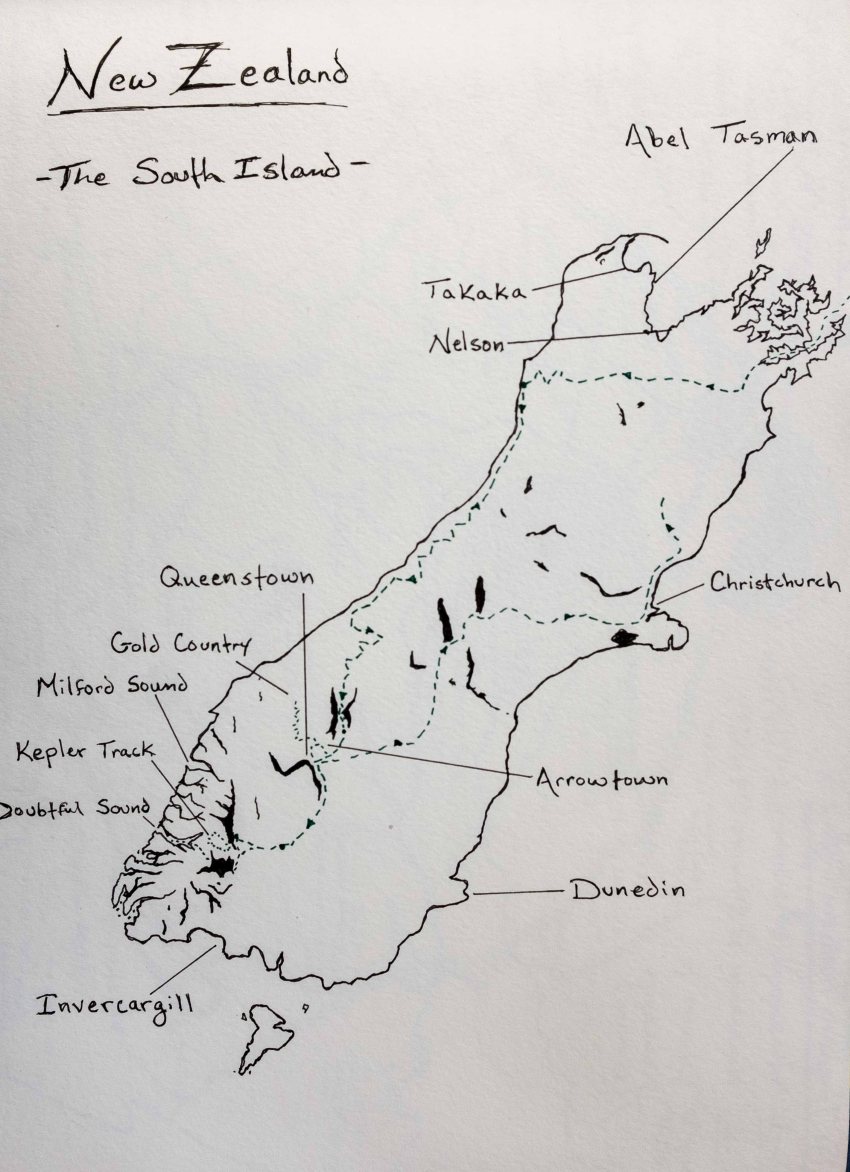
Paddling Fiordland – Doubtful Sound

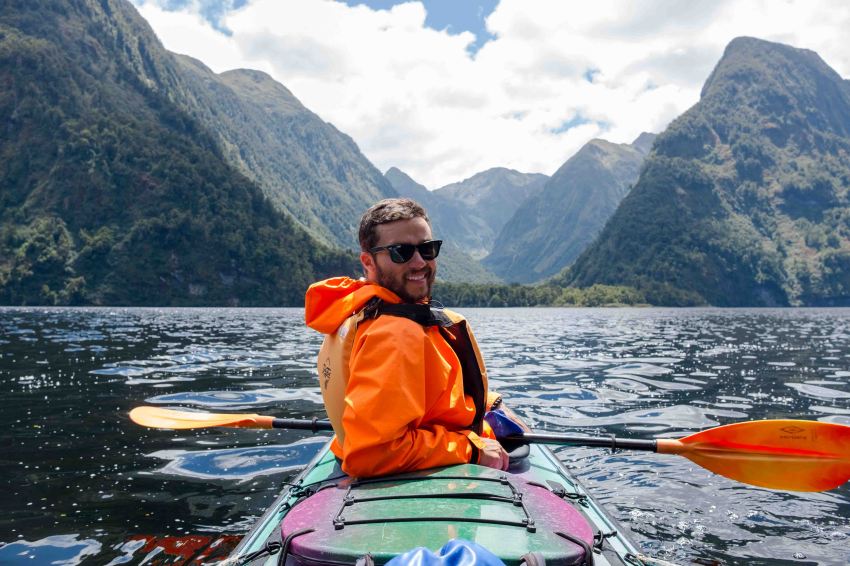
Rather like scuba diving, the preparation for cold Fiordland kayaking is laborious.
First, strip down to your skivvies, and shiver, while fending off sand flies. More on those in a moment. The base layer is a blue, long-sleeved fleece shirt, along with your underwear. Next comes the cold, clammy wet-suit, fastened over the shoulders like velcro, waterproof overalls. On top of the wet-suit goes the thicker, sweater-like fleece top. With the top securely in place, an awkward, rubber apparatus goes over your head and fastens around your chest. This kayak “skirt” attaches you, like a human suction cup, to the kayak, effectively keeping water out of the vessel and in the Fiord. On top of this vestige goes a bright orange, hooded, waterproof jacket. Add a beanie under a mullet hat and boom! You’re ready to kayak.
Down the rocky loading bank you trundle, feeling like a tick ready to pop, but secretly glad you are thus clothed as the morning is alarmingly, piercingly cold. Mark Twain, I believe, is attributed with the famous, cheeky quote “The coldest winter I ever spent was a summer in San Francisco.” Well, I’d like to modify it: “The coldest winter I ever spent was three weeks on the South Island of New Zealand.” It’s supposed to be summertime down here! Anyways, you feel slightly less foolish since everyone else around—all eight people in the group—are identically equipped. And at least you’re passably warm.
As with scuba diving, the awkward gear and laborious preparation all immediately fade into the background once you hit the water. The unwelcome 4:45 alarm suddenly seems a bargain as you glide your first 100 yards through the glassy Fiord water, and see the sheer mountain cliffs to either side of you mirrored in the vast chasm of shimmering reflection.
New Zealand’s 14 Fiords were carved approximately 12,000 years ago, at the melting of the last ice age, by the movement of massive, ice-packed glaciers as they melted, inch by inch, towards the sea. You might notice, if you examine the bottom left side of the South Island, a number of rough clefts, valleys that lead to the ocean. In Maori legend, the Fiords were created by a rambunctious demigod, who took a great stick and roughly hewed gouges out of the land, great slices that widen until they eventually reach the ocean.
Paddling along these silent, still channels, it is not difficult to imagine why the Maori might have come up with a legend of the sort. High, overwhelmingly high and steep, the mountains ascend three thousand feet or more to each side. Below, although the water is the color of black tea left too long to steep, I know the mountain valleys continue down, a thousand feet below me. That first day, that magical morning, the sun came out to greet us, and even the guide, who does this trip 100 times in a season, took out his camera for photographs.
Camping that night, in remote, untouched Fiordland, was at the same time fun and painful. In Maori lore, once this demigod created the Fiordland landscape, his sisters and brothers came to appreciate, and bring gifts. The ocean demigod populated the waters with diverse sea-life, including black corals that grow only 1 millimeter per year, and fetch a fortune on the black market (if you’re willing to risk the $10,000 + fines!). The forest demigod gifted vegetation and trees, so that nearly every craggy, hard slope is covered in lush, strangely tropical fauna. But the demigod of the underworld, that bitch. She took one look at the place, and said “this land is so beautiful that once someone comes, they might never be persuaded to leave again.” And so she created the sand-fly.
Think: mosquito, but worse. Maybe ten times worse. The females, like mosquitoes, harvest the blood of other animals to feed their young. The size of a gnat, perhaps one quarter the size of a regular fly, they swarm. Thousands, perhaps millions of them are always present, and they are relentless in their assault on foreign invaders. Even now, many days after the trip, I can hardly concentrate because the backs of my hands and tops of my feet (the only pieces of flesh ever exposed) are inflamed with dozens, nay hundreds of bites, swollen and itchy and miserable from the venom. Like I said, that bitch.
Anyways, I digress. Day two brought the patter of rain, and all grey morning we slid our paddles in and out of the still water, listening to the fall of rain and the trickle of waterfalls, cascading into the Fiord every 500 feet or so. The rain brought a different experience to the trip, so much so that many of us remarked that, although we paddled back by the same stretch as the prior day, it seemed to us an entirely new landscape, lovely and mysterious. Shrouds of mist hovered about mountain clefts and rose in lazy tendrils over the clear, dark water.
On the way back to the jetty, after five hours of paddling, I shifted in my kayak seat, stretching my legs and sore lower back. I leaned back as much as the seat would allow, and knotted my fingers together behind my head. I looked up at the roaring, 1,000-foot waterfall next to me and breathed long, deep breaths, letting the others continue far ahead. Quiet seconds turned into quiet, calm minutes. All seemed right with the world.
And then, another fucking sand fly bit me.
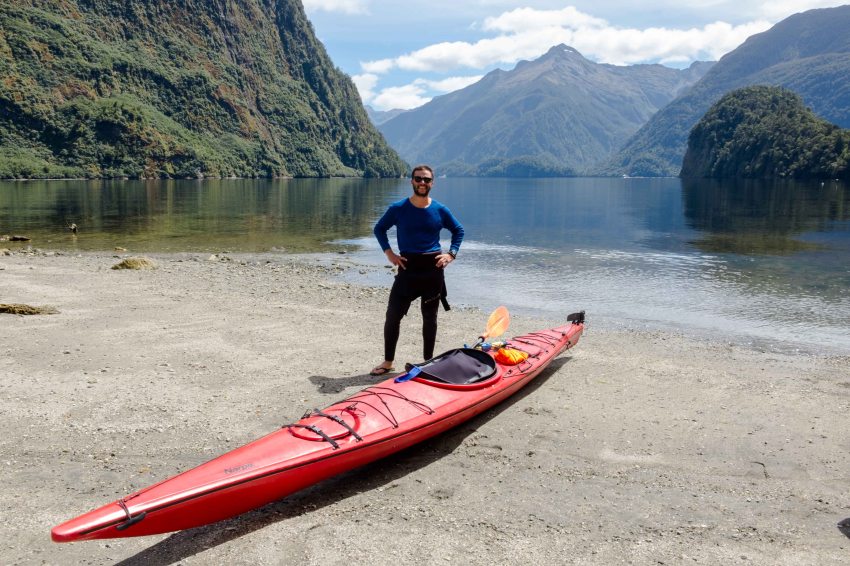
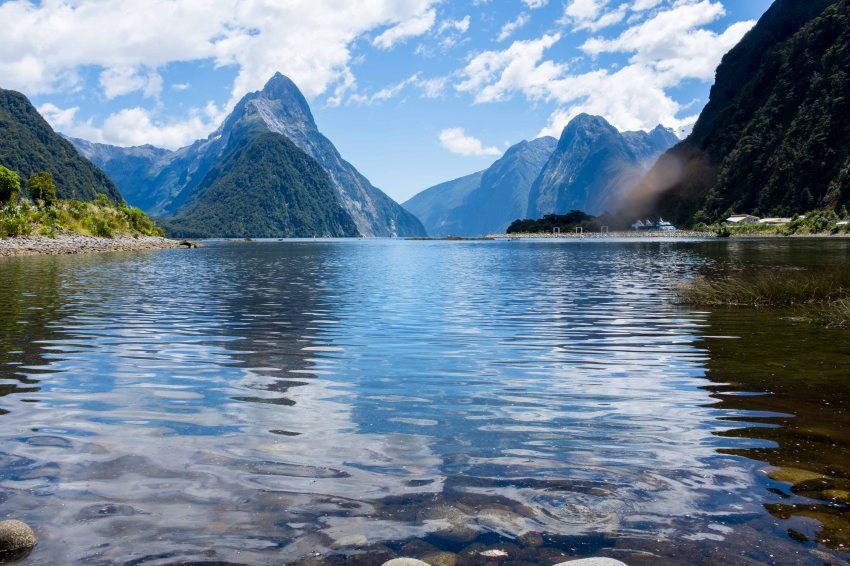
The Kepler Track
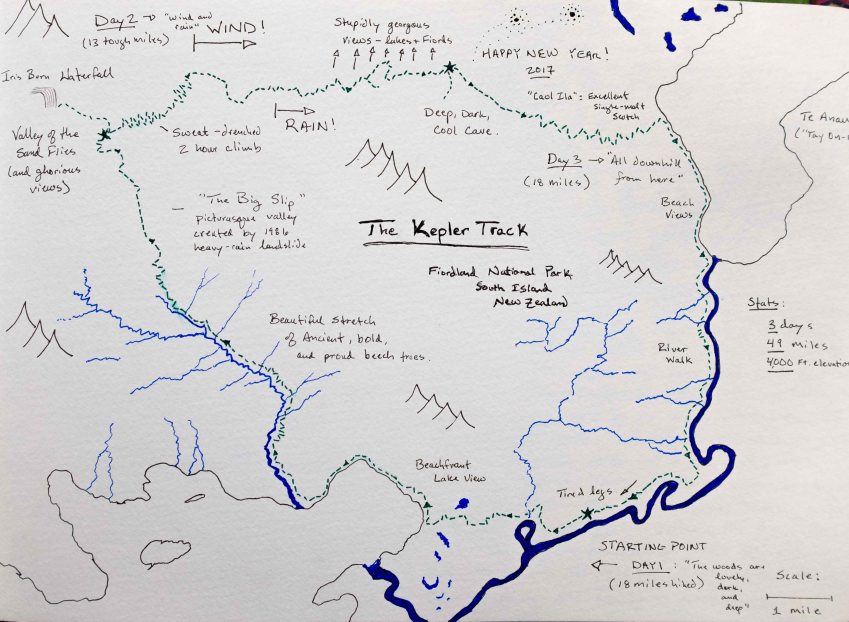
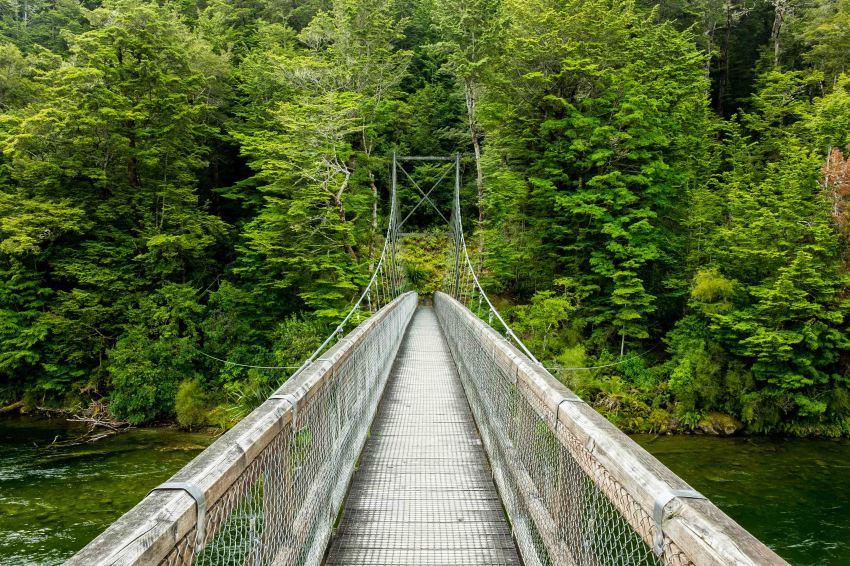
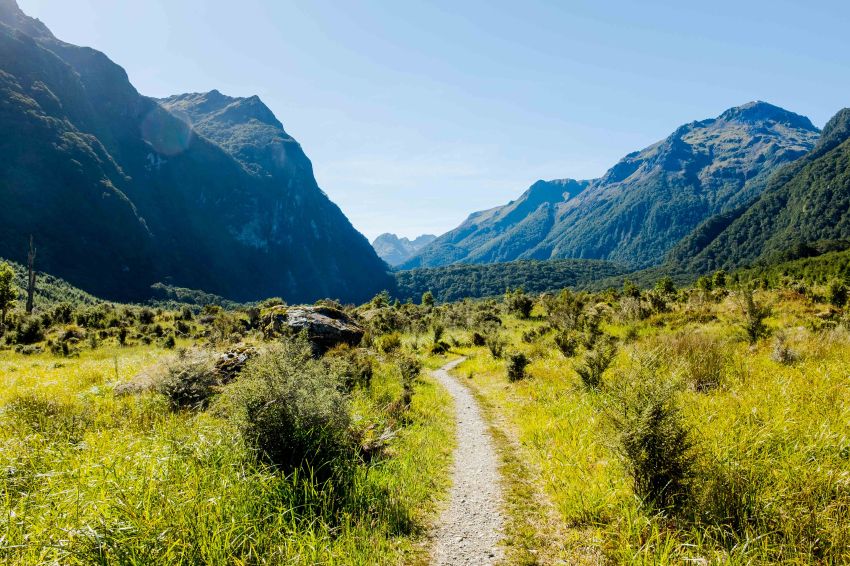
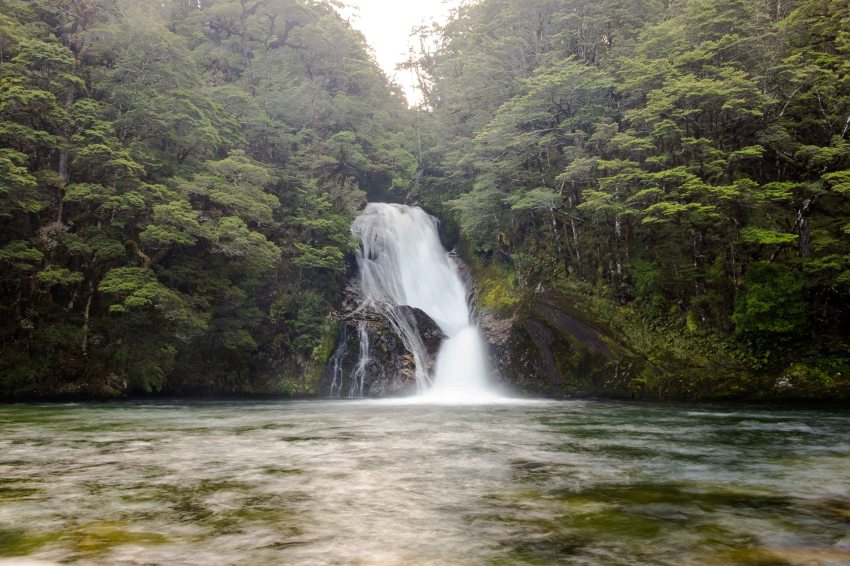
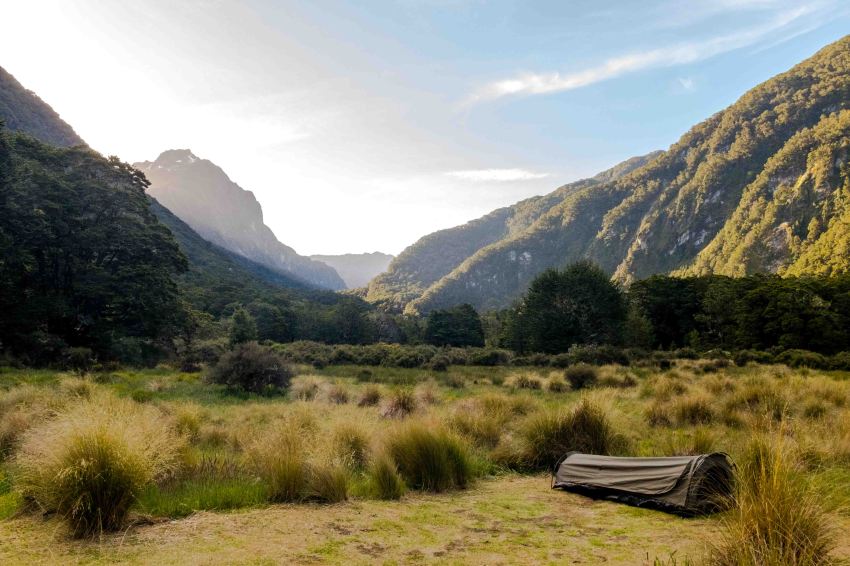
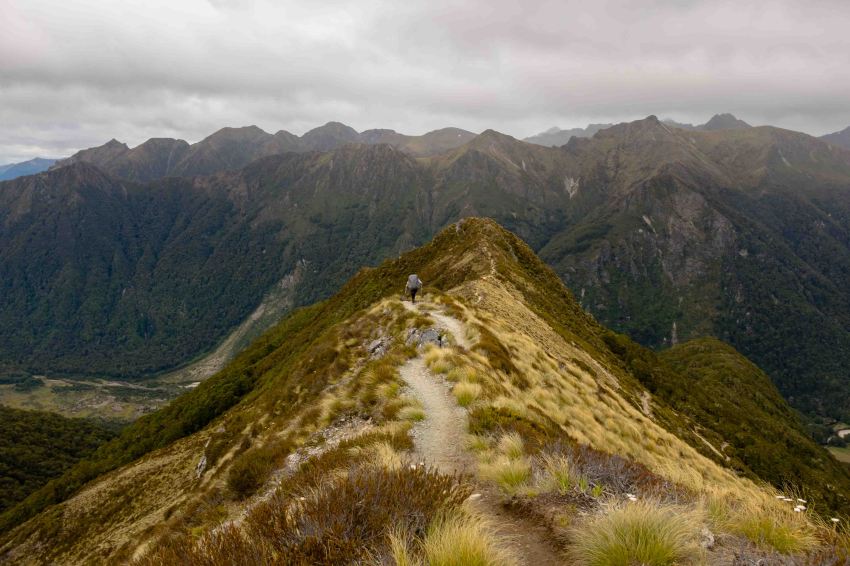
“Up and Over” Day 2


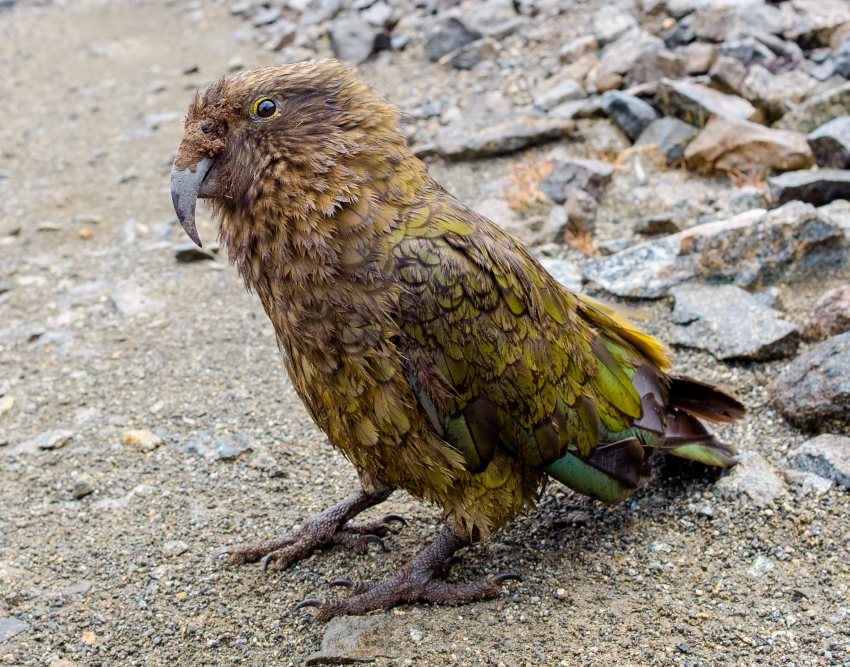
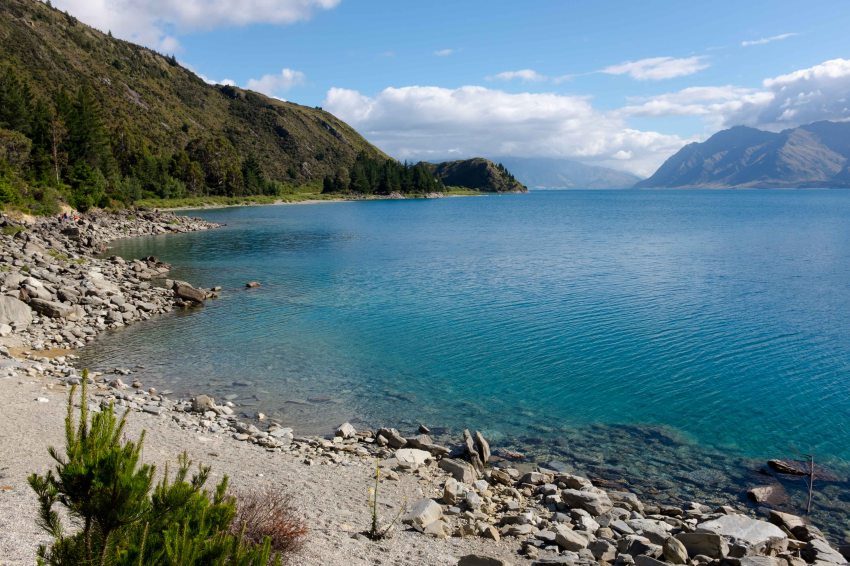
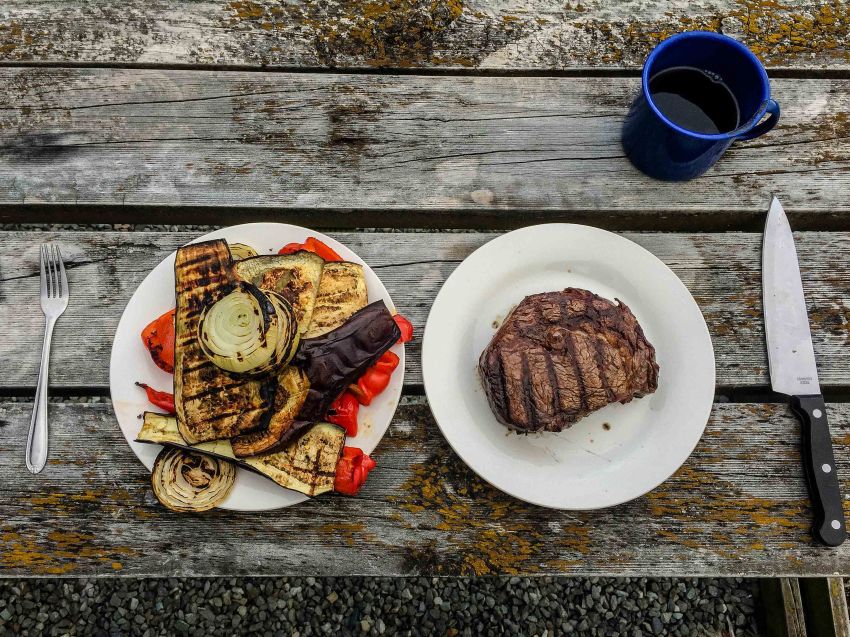
Darkness.
Pure, moist, deep, pitch darkness.
I’m at least 1,000 feet underground in an ancient cave, carved by untold millennia of water. I had no idea it came down this far. In fact, I had no expectation at all, except for the curiosity roused by a “Luxmore cave—2 km” sign at the end of a seven-hour hike while on the Kepler Track. The entrance to the cave—small and shallow—is deceptive. From the surface, the cave seems, perhaps, 200 feet deep.
At the end of the first 200 feet, following a steadily declining slope (water always finds, and carves, the quickest way down), I notice that the late, rainy afternoon light is only a round patch far above and behind. I click on my headlight, just to have a look around, and see that the cave goes deeper.
The stream, hardly two feet wide and two inches deep, is ever present. After the large, 200 foot entrance, the passage narrows. The walls glisten, and wet drops fall from the ceiling. The light of my headlamp catches the mineral deposit buildup, and above me sparkles a subterranean sky.
The passage grows tight—is this the end? Merely a narrowing. I’m well prepared by the previous seven hours of rain swept hiking, equipped with boots, waterproof pants, and an impermeable rain jacket. Armor. Even so, it’s a delicate business, with drops falling from the ceiling, water chuckling below, and glistening, trickling mineral moisture on all sides.
Before long, what little light remained from the entrance, now far behind, has vanished. The roof comes together and I’m crawling, contorting, using my hands as much as my feet. The passage twists and turns—boulders to maneuver and white, ethereal formations to marvel at. A small, two-foot wide crack gives way to a cavern, slick, tall, asymmetrical.
And still, the passage goes on. Follow the water, always downwards. Another cavern, and another, and another. It’s been 30 or 40 minutes, and the cave keeps going. I’m tempted to turn back, but curiosity drives me on. Ahead, the water continues into big boulders. Blocked. Wait–there is a passage space, and, crouching, stooping down, using all four limbs, I keep climbing down.
Forty-five minutes down, I arrive at a big cavern, maybe 15 feet tall by 40 feet long. I sit on a cold, wet stone and switch off my light. Pitch black. Absolute, utter darkness. Eyes open or closed, no matter. Blinking has no effect. All I can hear is the trickle of the stream, the laughter of the water as it follows its ancestral path.
I’m not scared, or unnerved, surprisingly. I’m comfortable. I’m calm.
I sit there, in a darkness and stillness, and reflect. It’s been a busy year, a busy life. So many thoughts, problems, worries. None of them seem to matter down here, deep in the calm earth. I take ten deep breaths. I put my hand in the cool stream, and run my fingers across my forehead, through my hair.
The hike back to the surface is light, fun, easy. I emerge from the cave, greeted by soft, grey evening rain. I have my armor. I feel excited about the future. It’s New Year’s Eve, after all.

Gold Country

“So, where are you from?”
“I’m from the states, California.”
“Ah, California! Similar gold rush country.”
“I know! I grew up very close to where they first discovered gold in 1848. We used to go gold panning and whatnot during field trips back in elementary school.”
“Alright! Well, you should feel right at home here in Arrowtown.”
I’m in the bottom portion of the South Island, near Queenstown, exploring the charming little main street of Arrowtown. Oddly similar to Auburn, California, Arrowtown was an old mining outpost during New Zealand’s gold rush of 1862, and remains a lovely little historical spot today. While walking down the main street, I’ve entered the “Gold Shop,” and struck up friendly conversation with the owner, Justin.
Justin, I soon learn, is a lifetime prospector of gold, who spent decades hunting the heavy yellow metal in the vast reaches of Western Australia. He clearly knows much and more about gold, jewelry, and precious stones, and I later chuckle to learn that he is the only New Zealander to ever beat the Australians at their national gold panning competition (who knew there was such an event?).
Before long, he brings out his personal stash of interesting pieces—quartz with beautiful gold veining, unique ore with blobs of gold embedded, and even a gold nugget he found in the shape of a “J.” He mentions that he owns a gold claim in the New Zealand back country—a few hours away—up a creek where the old-timers used to mine over 100 years ago. One of the old prospectors built a rough cabin up there in the 1930s, and over 30 years ago he found it, restored it, and spent many summers with his wife and later his children finding gold up on the claim.
Nowadays, the gold yield from the river is nothing like it was 100 years ago, or even 30 years ago, but gold could still be found. He says, heck, if you want, you’re welcome to hike up there for a few days to try your luck. Flush with elementary school memories of gold panning fun, I take him up on the offer.
Kiwis (a New Zealand nickname coined from their national bird, the flightless Kiwi, and not the fruit) are very friendly people. Justin, who has two children around my age, invites me to his farm, and equips me for the expedition. Gold pan, shovel, wading boots, and a map. Should be an hour drive, and then a two hour hike up to the claim.
I set off early the next morning, and find that the claim is in the back country indeed! The adventure begins with an hour-long drive from Arrowtown down Skippers road – a treacherous, terrifying gravel road, complete with winding narrow cliffs, awkward maneuvering when oncoming cars swerve towards you around blind turns, and ancient suspension bridges, clearly not built for large automobiles. At the end of Skippers road, I park my car by a long-deserted town, and begin the two-hour hike, with my pack, down a gorge and up a meandering, decent sized-river.
I see a few stray hikers along the way – this area is a “historical preservation” site – but hardly anyone else. About an hour and a half in, I think, almost there! A errant left turn at a fork in the river sends me on a 3 hour detour. But, a 30 foot waterfall makes the detour pleasant, and after I retrace my steps I eventually I find the cabin—rough, remote, but comfortable and adequate.
Once set up, I head back to the river to try my luck. I work the stream—a small, cheerful thing, and after many hours of sweat, toil, and sand flies (yuck!) I find—only a few flakes. The yield is small—the old timers obviously did their work well—but each glint of yellow in the bottom of the pan, when only the dark sand is left, justifies a “whoop!” and an “allll-riiiight!” for no one to hear.
That night, my back is sore, my feet are soggy, and my hands are rough, but I make a fire in the rough stone fireplace. The cabin is cozy, and after a leisurely dinner and hot chocolate I sleep soundly, just me and one tiny dormouse, while the fire burns low to coals.


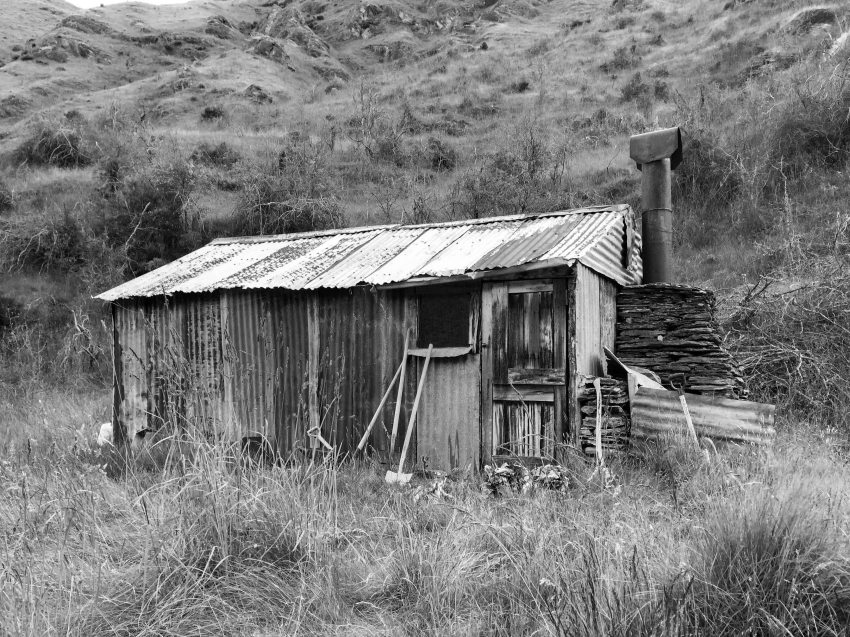


Hi Nick, I am having so much fun reading your blogs. I haven’t had a chance to check in for a while, but did so today and your blog entries left me smiling. Good for you for being a brave, adventurous traveler, and then taking the time to share it with us.
LikeLiked by 1 person
Thanks Melissa, pleased to hear you’re enjoying reading about my meandering travels! Hope all is well back in SB 🙂
LikeLike
Great adventures Nick. I really love reading about them!
LikeLiked by 1 person
Thank you Burt, it’s fun putting them together and I’m pleased you enjoy them!
LikeLike
Nicollo,
Your writing skills are marvelous. Congrats on the adventures, and on the chronicling. Brian, Gary, and i discussed your stuff today — very well done. (“…covered in lush, strangely tropical fauna…” You mean flora?)
I spent a lot of time with the sandflies, but I never seemed to be their favorite target, or react that much to their stings. Every move in or out of shelter (hut, tent, etc.) has to be planned and timed to thwart the invasion. They are a big obstacle to getting comfortable in Fjordland. they’re much less a problem in the other three seasons.
You might later enjoy reading /The Luminaries,/ set in NZ in the 1860s West Coast gold rush.
Have fun, be safe, and great to catch up in NZ. I am copying Pete, Jo, and Lenore West. try to catch up with Pete again and with Lenore and Lance in auckland.
Lance Mason Email: lmason@silcom.com 1212 Calle Cerrito Santa Barbara, CA 93101 Phone: (805) 910-5491
LikeLiked by 1 person
Lance,
Thanks for the nice words. Perhaps I need the help of an editor! Not sure why I was so affected by the sand flies, as mosquitos usually don’t bug me too much, but happy to be out of their realm in any case. I’ll look into the Luminaries; the whole experience was a blast and I’d like to learn more about the area’s history.
I’ve got four or five days in Auckland before taking off, so I will see if I can catch up with Pete again, along with Jo and Lenore.
Cheers!
Nick
LikeLike
PS – I tried both Crunchy and Smooth Pic’s Peanut Butter. Though I’m usually a creamy fan ( they leave the uncrunched nuts too large for my taste in American PB), the Pic’s crunchy won the contest hands down.
LikeLike
I am living your adventures X
Sent from Rose’s iPhone
>
LikeLiked by 1 person
Loving the vicarious experience! Missing you. Take care!
LikeLiked by 1 person
cool! Can’t wait to go there 🙂
LikeLiked by 1 person
Looks amazing Nick, the pics of the Kepler Track are particularly breathtaking. Some time alone in a dark and silent cave sounds like a nice break too! 😉
Cheers bud.
LikeLiked by 1 person
allll-riiiight! hehe 😉
LikeLiked by 1 person